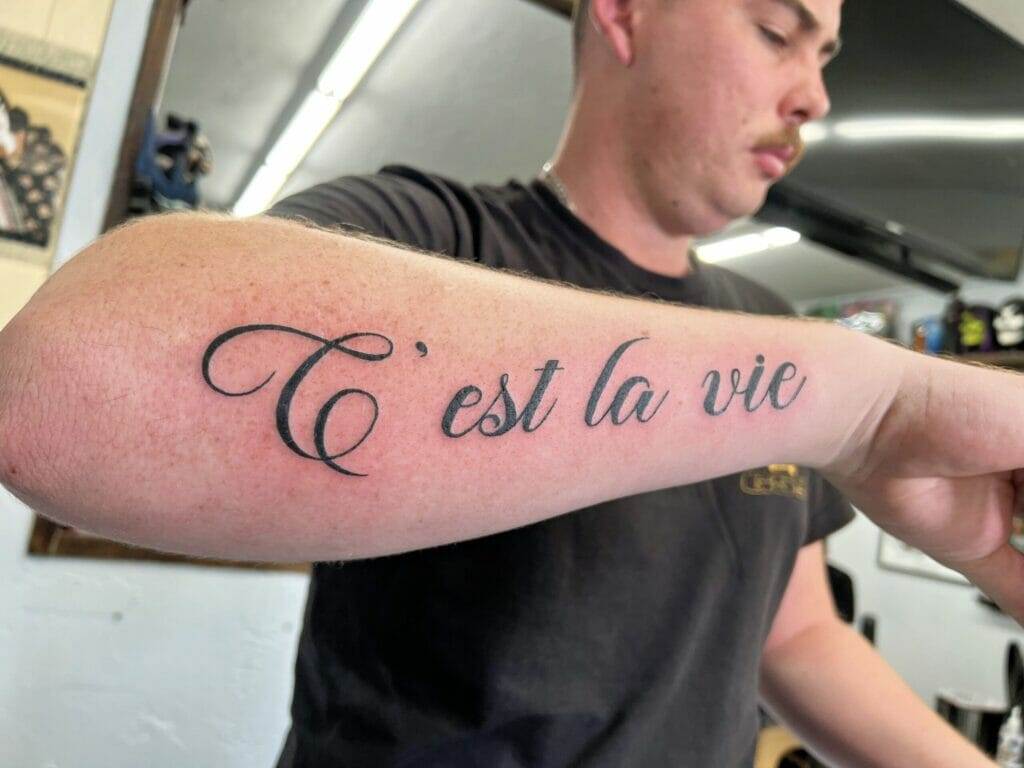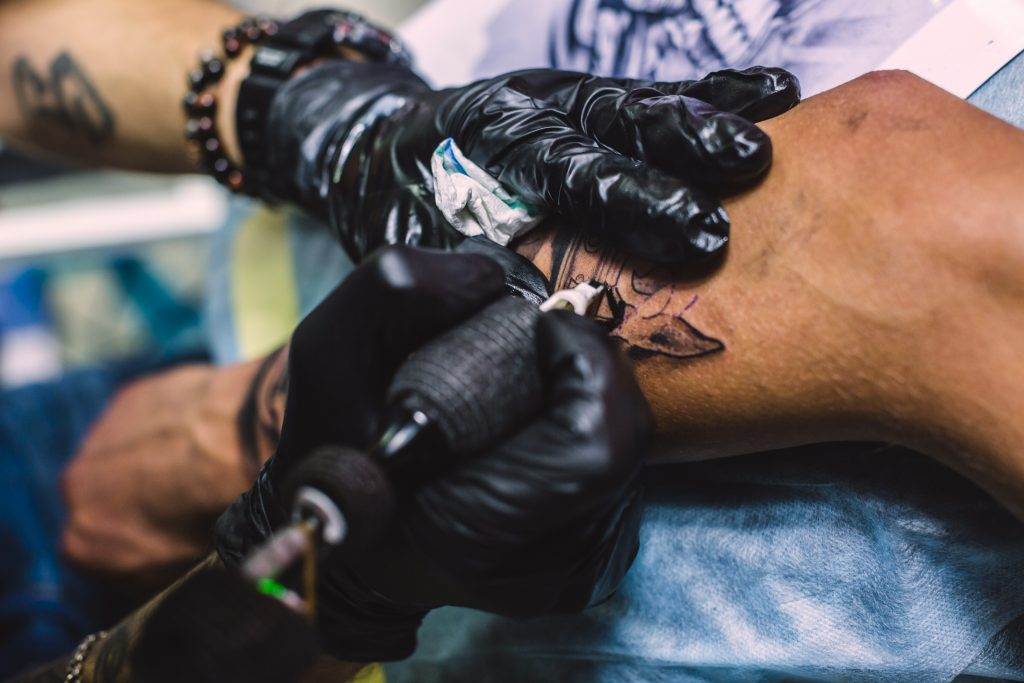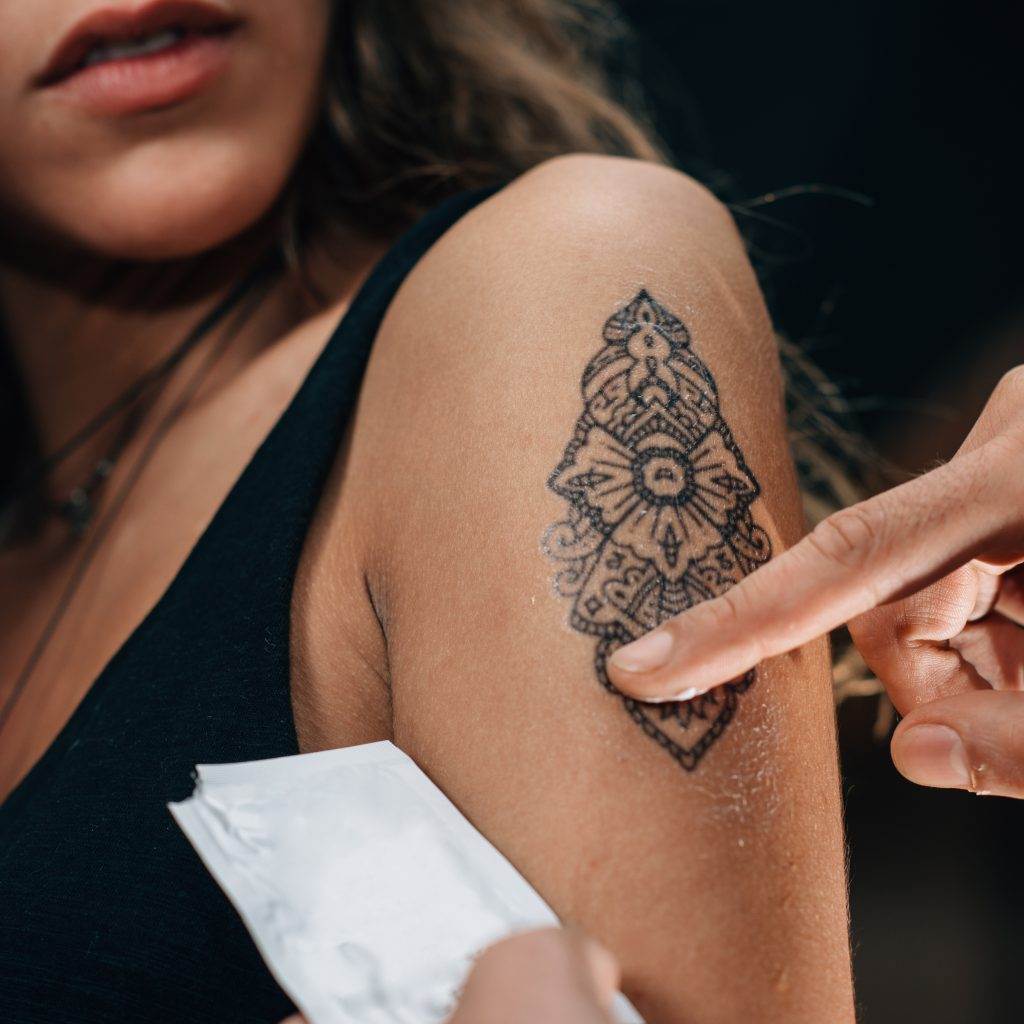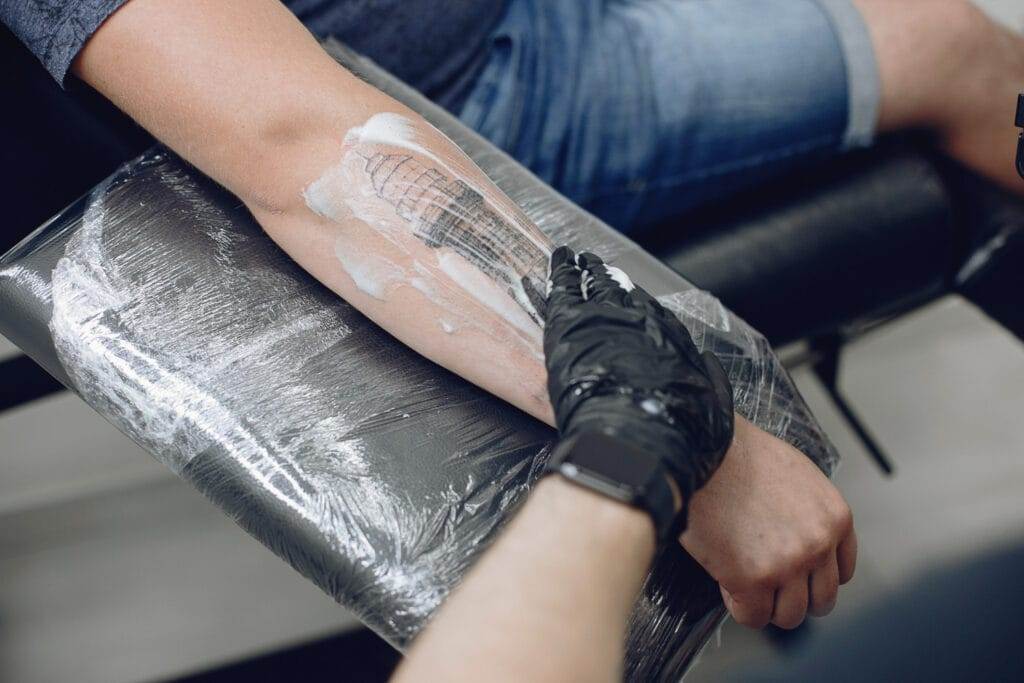Tattoos have become increasingly popular in recent years, with more and more people choosing to adorn their bodies with intricate designs and meaningful symbols. What was once considered taboo or associated with a certain subculture has now become a mainstream form of art. Tattoos have evolved from simple black ink designs to vibrant, detailed masterpieces that can cover large areas of the body. This article will explore the history and evolution of tattoos, as well as the different styles that have emerged over time.
The Evolution of Tattooing: From Ancient Times to Modern Day
Tattooing has a rich history that dates back thousands of years. The practice can be traced back to ancient civilizations such as the Egyptians, Greeks, and Romans, who used tattoos for various purposes including religious rituals, identification, and decoration. In these early societies, tattoos were often created using crude tools such as bone needles and natural pigments.
Over time, tattooing techniques and tools have evolved significantly. In the 19th century, the invention of the electric tattoo machine revolutionized the industry, making it faster and more efficient. This led to an increase in the popularity of tattoos among sailors and soldiers, who would often get tattoos to commemorate their travels or military service.
In modern times, tattooing has become a respected art form, with skilled artists pushing the boundaries of what is possible on the skin. The introduction of new pigments and advanced tattoo machines has allowed for more intricate and detailed designs. Today, tattoos are seen as a form of self-expression and personal storytelling.
Popular Tattoo Styles: Exploring the Unique Characteristics of Each
There are several different tattoo styles that have emerged over time, each with its own unique characteristics and techniques. These styles range from traditional to contemporary, and each has its own dedicated following.
One popular style is traditional tattooing, also known as old-school ink. Traditional tattoos are characterized by bold, black outlines and a limited color palette. They often feature classic designs such as anchors, roses, and skulls. Traditional tattoos have a timeless appeal and are known for their clean lines and solid colors.
Realism tattoos, on the other hand, aim to create life-like images on the skin. These tattoos require a high level of skill and attention to detail, as the artist must accurately capture the texture and shading of the subject. Realism tattoos can depict anything from portraits of loved ones to animals or landscapes.
Watercolor tattoos are another popular style that has gained popularity in recent years. These tattoos mimic the appearance of watercolor paintings, with soft edges and vibrant colors that blend together seamlessly. Watercolor tattoos require a delicate touch and a good understanding of color theory to achieve the desired effect.
Geometric tattoos are characterized by their use of precise lines and shapes. These tattoos often feature intricate patterns and symmetrical designs. Geometric tattoos can be simple or complex, depending on the artist’s skill level and the client’s preferences. They are often chosen for their aesthetic appeal and symbolic meaning.
Dotwork tattoos are created using thousands of tiny dots to form an image. This technique requires a great deal of patience and precision, as each dot must be carefully placed to create the desired effect. Dotwork tattoos can range from simple geometric patterns to intricate mandalas or religious symbols.
Blackwork tattoos are characterized by their bold, black ink designs. These tattoos often feature large areas of solid black ink, with minimal shading or color. Blackwork tattoos can be highly detailed or more simplistic, depending on the artist’s style and the client’s preferences.
neo-traditional tattoos combine elements of traditional tattooing with more modern techniques and styles. These tattoos often feature bold outlines and vibrant colors, but also incorporate elements such as realism or watercolor effects. Neo-traditional tattoos are known for their bold, eye-catching designs and are often chosen for their unique and personalized style.
Traditional Tattoos: The Timeless Beauty of Old-School Ink

Traditional tattoos have a long history and are characterized by their bold, black outlines and limited color palette. These tattoos often feature classic designs such as anchors, roses, and skulls. Traditional tattooing techniques involve using a single needle and hand-poking the design into the skin.
Traditional tattoos have a timeless appeal and are known for their clean lines and solid colors. They are often chosen for their simplicity and boldness. Traditional tattoos have a rich cultural significance, with many designs representing specific meanings or symbols. For example, an anchor tattoo can symbolize stability or a connection to the sea, while a rose tattoo can represent love or beauty.
Popular traditional tattoos include the swallow, which is often associated with sailors and represents freedom and loyalty. Another popular design is the pin-up girl, which originated in the 1940s and 1950s and represents femininity and beauty. Traditional tattoos continue to be popular today, with many people choosing to get these timeless designs as a way to honor their heritage or pay homage to the past.
Realism Tattoos: Bringing Life-Like Images to the Skin
Realism tattoos aim to create life-like images on the skin, often depicting portraits of loved ones, animals, or landscapes. These tattoos require a high level of skill and attention to detail, as the artist must accurately capture the texture and shading of the subject.
Realism tattooing techniques involve using a combination of shading, highlighting, and blending to create depth and dimension. The artist must have a good understanding of light and shadow to achieve a realistic effect. Realism tattoos can be done in black and gray or color, depending on the client’s preferences.
Creating a realistic tattoo can be challenging, as the artist must capture not only the physical features of the subject but also their personality and emotions. It requires a great deal of skill and experience to create a tattoo that truly captures the essence of the person or object being depicted.
Popular realism tattoos include portraits of loved ones, animals, and famous figures. These tattoos are often chosen for their sentimental value or as a way to commemorate a special person or moment in someone’s life.
Watercolor Tattoos: The Delicate Beauty of Brush Strokes on Skin
Watercolor tattoos have gained popularity in recent years for their delicate and ethereal appearance. These tattoos mimic the look of watercolor paintings, with soft edges and vibrant colors that blend together seamlessly.
Watercolor tattooing techniques involve using a combination of thin lines, soft shading, and splashes of color to create the desired effect. The artist must have a good understanding of color theory and blending techniques to achieve the desired result. Watercolor tattoos can be done in a variety of styles, from abstract designs to realistic images.
Creating a watercolor tattoo can be challenging, as the artist must work quickly to blend the colors before they dry. It requires a delicate touch and a good understanding of how different pigments interact with each other. Watercolor tattoos are often chosen for their unique and artistic style, as well as their ability to create a soft and dreamy look on the skin.
Popular watercolor tattoos include flowers, animals, and abstract designs. These tattoos are often chosen for their aesthetic appeal and symbolic meaning. Watercolor tattoos can be highly personalized, with each design being unique to the individual.
Geometric Tattoos: The Intricate Symmetry of Shapes and Lines
Geometric tattoos are characterized by their use of precise lines and shapes. These tattoos often feature intricate patterns and symmetrical designs. Geometric tattooing techniques involve using a combination of straight lines, curves, and angles to create the desired effect.
Creating a geometric tattoo requires a great deal of precision and attention to detail. The artist must have a good understanding of geometry and symmetry to ensure that the design is balanced and visually appealing. Geometric tattoos can be done in black and gray or color, depending on the client’s preferences.
Geometric tattoos often have symbolic meanings, with each shape or pattern representing something specific. For example, a triangle can symbolize balance or harmony, while a circle can represent unity or wholeness. Geometric tattoos are often chosen for their aesthetic appeal and their ability to create a visually striking design on the skin.
Popular geometric tattoos include mandalas, sacred geometry symbols, and geometric animals. These tattoos are often chosen for their spiritual or symbolic meaning, as well as their intricate and eye-catching designs.
Dotwork Tattoos: The Art of Creating Images with Dots
Dotwork tattoos are created using thousands of tiny dots to form an image. This technique requires a great deal of patience and precision, as each dot must be carefully placed to create the desired effect.
Dotwork tattooing techniques involve using a single needle to create thousands of tiny dots on the skin. The artist must have a steady hand and a good understanding of spacing and shading to achieve the desired result. Dotwork tattoos can be done in black and gray or color, depending on the client’s preferences.
Creating a dotwork tattoo can be time-consuming, as each dot must be carefully placed to create the desired image. It requires a great deal of skill and attention to detail to ensure that the dots are evenly spaced and create the desired effect. Dotwork tattoos are often chosen for their unique and intricate designs, as well as their ability to create a visually striking pattern on the skin.
Popular dotwork tattoos include mandalas, religious symbols, and geometric patterns. These tattoos are often chosen for their spiritual or symbolic meaning, as well as their intricate and eye-catching designs.
Blackwork Tattoos: The Bold and Striking Beauty of Black Ink
Blackwork tattoos are characterized by their bold, black ink designs. These tattoos often feature large areas of solid black ink, with minimal shading or color. Blackwork tattooing techniques involve using a combination of thick lines and solid black ink to create the desired effect.
Creating a blackwork tattoo requires a great deal of skill and precision, as the artist must ensure that the lines are clean and the black ink is evenly distributed. Blackwork tattoos can be done in a variety of styles, from traditional to contemporary.
Blackwork tattoos often have symbolic meanings, with each design representing something specific. For example, a black rose can symbolize death or mourning, while a black cat can represent mystery or magic. Blackwork tattoos are often chosen for their bold and striking appearance, as well as their ability to create a visually powerful design on the skin.
Popular blackwork tattoos include tribal designs, sacred geometry symbols, and occult imagery. These tattoos are often chosen for their symbolic meaning or as a way to make a bold statement.
Neo-Traditional Tattoos: The Fusion of Old-School and New-School Techniques
Neo-traditional tattoos combine elements of traditional tattooing with more modern techniques and styles. These tattoos often feature bold outlines and vibrant colors, but also incorporate elements such as realism or watercolor effects.
Neo-traditional tattooing techniques involve using a combination of thick lines, bold colors, and shading to create the desired effect. The artist must have a good understanding of both traditional and contemporary tattooing techniques to achieve the desired result. Neo-traditional tattoos can be done in a variety of styles, from realistic portraits to abstract designs.
Creating a neo-traditional tattoo requires a great deal of skill and creativity, as the artist must find a balance between traditional and contemporary elements. Neo-traditional tattoos are often chosen for their unique and personalized style, as well as their ability to create a visually striking design on the skin.
Popular neo-traditional tattoos include animals, flowers, and mythical creatures. These tattoos are often chosen for their aesthetic appeal and their ability to create a visually powerful design on the skin.

The Enduring Popularity of Tattoos as a Form of Art
Tattoos have come a long way from their humble beginnings as simple black ink designs. Today, tattoos are seen as a respected form of art, with skilled artists pushing the boundaries of what is possible on the skin. From traditional to contemporary styles, there is a tattoo for everyone.
The enduring popularity of tattoos can be attributed to their ability to tell a story and capture a moment in time. Tattoos are deeply personal and can hold significant meaning for the individual wearing them. They can serve as a reminder of loved ones, represent personal beliefs or values, or simply be a form of self-expression.
As tattooing techniques continue to evolve and new styles emerge, the future of tattooing as an art form looks bright. With advancements in technology and an increasing number of talented artists entering the industry, tattoos will continue to captivate and inspire people for years to come. Whether it’s a traditional design or a modern masterpiece, tattoos will always have a place in the world of art.



